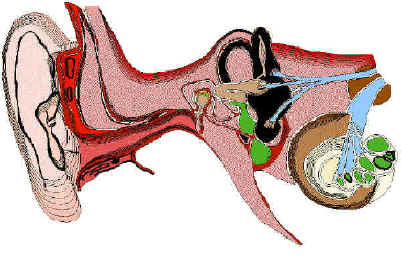BACKGROUND:
 Children
always seem to have questions that many adults cannot answer. Therefore,
it is important to teach children the skills to learn more about a
subject. This activity uses "sound" as the vehicle to spark
students' interest in this research. Many students take the gift of
hearing for granted. Have students imagine a world without music, a
voice, or what a bird sounds like. Violins, flutes, and other
instruments were designed to capture the beautiful sounds of nature.
Without sound, we cannot imitate sound. Deaf people have trouble talking
because they haven't heard the sounds. Children
always seem to have questions that many adults cannot answer. Therefore,
it is important to teach children the skills to learn more about a
subject. This activity uses "sound" as the vehicle to spark
students' interest in this research. Many students take the gift of
hearing for granted. Have students imagine a world without music, a
voice, or what a bird sounds like. Violins, flutes, and other
instruments were designed to capture the beautiful sounds of nature.
Without sound, we cannot imitate sound. Deaf people have trouble talking
because they haven't heard the sounds.
Sound is a physical
wave. It actually vibrates through the air and then literally
"knocks" on our ear drum. We translate these signals into
words that mean something. Sound cannot be heard in a vacuum.
Living on a planet without air would mean a silent world.
PROCEDURE:
- This activity
inspires students to learn about sound and its components by conducting
research at home or at the school library. Have students spend time
doing "research" as a group if your school is equipped with a library or
internet access.
- This is an opportunity
to introduce students to research books such as reference books and science
books. For instance, "sound" can be located in several sections including
physics, music, instruments, or senses.
- In the library, internet,
or as a homework assignment, have students research what sound is.
Use the enclosed worksheet to help students find out about sound.
After the research, discuss what students learned about sound. You
will be amazed at what they can find out from books or even an encyclopedia.
- Students should write
a paragraph similar to the example below.
Blowing a flute, playing a drum,
strumming a guitar, and hitting a gong will produce different types of
sound. Playing an instrument makes part of it vibrate rapidly back
and forth. The vibration of the instrument causes different types
of waves to be transmitted to our ears. The sound wave from each
instrument makes its own kind of pressure changes in the air. These
vibrations are "translated" by the brain so that we can recognize which
instrument is being played.
|